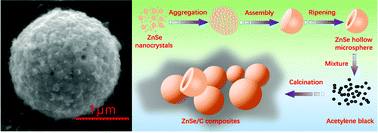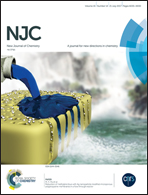Hollow-sphere ZnSe wrapped around carbon particles as a cycle-stable and high-rate anode material for reversible Li-ion batteries
Abstract
Hollow-sphere ZnSe is successfully obtained through Ostwald ripening. Carbon nanoparticles are designed and utilized to form a wrapped carbon network as a conductive buffering matrix by subsequent annealing. The ZnSe/C composites, as anode materials for lithium-ion batteries (LIBs), exhibit excellent Li+ storage properties, delivering a high reversible capacity of 573.7 mA h g−1 at 1.0 A g−1 after 800 cycles. Even upon increasing the high current density to 20.0 A g−1, the reversible capacity can achieve 318.8 mA h g−1 after 5000 cycles. The superior rate capability is confirmed through the current density return from 20.0 to 1.0 A g−1, and ZnSe/C composites still recover up to 469 mA h g−1, with a retention of 92%. The enhanced electrochemical performances of ZnSe/C composites are attributed to the unique structure and the introduction of conductive carbon networks, which can improve the Li+ diffusion coefficient in the insertion and extraction process. Furthermore, the interconnected network also alleviates the volume variation during cycling and further enhances the structural stability.



 Please wait while we load your content...
Please wait while we load your content...